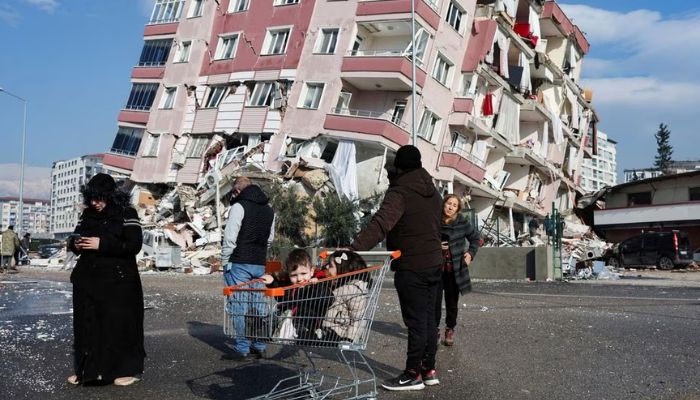Building instability refers to the structural deficiencies or weaknesses that can compromise the integrity and safety of a building. These instabilities can result from various factors, including design flaws, construction errors, material degradation, environmental influences, and improper maintenance. Understanding the causes, effects, and potential solutions to building instability is crucial for ensuring the safety and longevity of structures.

Causes of Building Instability
Design Flaws:
- Inadequate Structural Design: Poorly designed structures that do not account for all possible loads and stresses can lead to instability. This includes inadequate load distribution and failure to consider dynamic loads such as wind, seismic activity, and human occupancy.
- Insufficient Redundancy: A lack of redundancy in the structural design can mean that if one component fails, there is no secondary system to prevent collapse.
- Architectural Aesthetics Over Functionality: Sometimes, the aesthetic appeal is prioritized over structural integrity, leading to potential weaknesses.
Construction Errors:
- Poor Workmanship: Errors during construction, such as improper placement of reinforcements, insufficient curing of concrete, and use of incorrect construction techniques, can compromise the structure.
- Non-Compliance with Standards: Failure to adhere to building codes and standards can result in unsafe buildings.
- Inadequate Supervision: Lack of proper oversight and quality control during the construction phase can lead to significant structural issues.
Material Degradation:
- Corrosion: Metal components, particularly steel reinforcements, can corrode over time, weakening the structure.
- Concrete Deterioration: Factors such as poor mix design, improper curing, and exposure to harsh environmental conditions can lead to cracking and weakening of concrete.
- Wood Decay: In wooden structures, rot, termite infestation, and fungal decay can significantly reduce structural stability.
Environmental Influences:
- Seismic Activity: Earthquakes can induce significant stress on buildings, especially if they are not designed to withstand such forces.
- Wind Loads: High winds, especially in hurricane-prone areas, can exert substantial lateral forces on buildings.
- Soil Conditions: Poor soil conditions, such as expansive clay or loose, sandy soils, can lead to foundation movement and settlement, affecting building stability.
- Flooding: Water can erode foundations, cause swelling of materials, and lead to moisture-related problems like mold and wood decay.
Improper Maintenance:
- Neglect: Failure to perform regular maintenance can allow small issues to grow into significant problems.
- Deferred Repairs: Postponing necessary repairs can exacerbate structural weaknesses.
- Inadequate Inspections: Regular inspections are crucial to identify and address potential instability issues before they become severe.
Effects of Building Instability
Structural Failure:
- Partial Collapse: Instability can lead to the partial collapse of a building, posing significant safety risks and requiring extensive repairs.
- Total Collapse: In extreme cases, instability can result in the total collapse of a building, leading to loss of life and property.
Safety Hazards:
- Injury or Death: Structural failures can cause injuries or fatalities to occupants and passersby.
- Falling Debris: Unstable buildings can shed materials, endangering anyone in the vicinity.
Economic Impact:
- Repair Costs: Addressing structural instability can be costly, involving extensive repairs or even reconstruction.
- Loss of Property Value: Buildings with known instability issues can suffer a decrease in market value.
- Business Disruption: For commercial buildings, instability can lead to operational disruptions and financial losses.
Legal and Regulatory Consequences:
- Liability Issues: Building owners and developers may face legal liabilities if instability results in harm or damages.
- Non-Compliance Penalties: Failure to meet building codes and standards can result in fines and other penalties.
Solutions to Building Instability
Thorough Design and Planning:
- Engage Qualified Professionals: Ensure that architects, engineers, and construction managers involved in the project are qualified and experienced.
- Comprehensive Structural Analysis: Conduct detailed structural analysis and modeling to anticipate and mitigate potential instability issues.
- Adherence to Codes and Standards: Follow local building codes and international standards to ensure the safety and stability of the structure.
Quality Construction Practices:
- Use High-Quality Materials: Select materials that are durable and suitable for the building’s intended use and environmental conditions.
- Implement Rigorous Supervision: Ensure continuous oversight during construction to catch and correct errors early.
- Adopt Advanced Construction Techniques: Utilize modern construction methods and technologies to enhance structural integrity.
Regular Maintenance and Inspections:
- Schedule Routine Inspections: Conduct regular inspections to identify potential issues before they become critical.
- Prompt Repairs: Address identified problems immediately to prevent them from worsening.
- Maintain Records: Keep detailed records of inspections, maintenance, and repairs for future reference.
Retrofitting and Strengthening:
- Seismic Retrofitting: Upgrade buildings in earthquake-prone areas to withstand seismic forces.
- Foundation Stabilization: Employ techniques like underpinning or soil stabilization to address foundation movement.
- Structural Reinforcement: Add additional supports or reinforcements to strengthen existing structures.
Environmental Considerations:
- Assess Site Conditions: Perform thorough site assessments to understand soil conditions and potential environmental hazards.
- Design for Resilience: Incorporate features that enhance the building’s ability to withstand environmental stresses, such as flood-resistant materials or wind bracing.
Conclusion
Building instability is a multifaceted issue that requires careful consideration of design, construction, materials, and maintenance. By understanding the causes and implementing proactive solutions, it is possible to ensure the safety, durability, and longevity of structures. Collaboration among architects, engineers, builders, and maintenance teams is essential to address the challenges of building instability effectively and create resilient buildings that stand the test of time.



